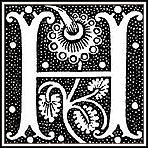


 |
 |
Signatures and Marks
Signatures and marks: Liddell Barony Enfranchisement Agreement, 1758

Source: Cumbria Record Office, Carlisle, D/GN/2/6
Commentary:
It is not uncommon to find original signatures of tenants of the manor in manorial records, notably on jury verdicts, presentments, and on papers concerning tenures. This example comes from the papers drawn up in connection with the enfranchisement of property in the manors of Bewcastle, Nichol Forest and Solport in Liddell barony in the far north of Cumberland in 1758 (see another extract from these papers). Not only do such signatures bring us closer to the lives of ordinary people, they can also be used to shed light on literacy levels. In this extract, the first three names are the bold, confident signatures of men who were apparently used to writing. Richard Lowry's signature is less steady: writing appears to have been an effort for him, perhaps through illness or age or perhaps because he only wrote infrequently. Two of the tenants (George Armstrong and Thomas Graham) have signed with their mark (a crudely scratched 'X' in Armstrong's case; a shaky initial 'G' in Graham's), suggesting that they were unable to write - but, again, we cannot tell whether this was because they were illiterate or the result of age or infirmity.
< Gallery
Credits: This site is maintained by Dr Angus Winchester and Dr Eleanor Straughton. For advice about access issues, please visit the Department's Accessibility Advice Page.
Copyright: Department of History, Lancaster University | Disclaimer: as per university policy.